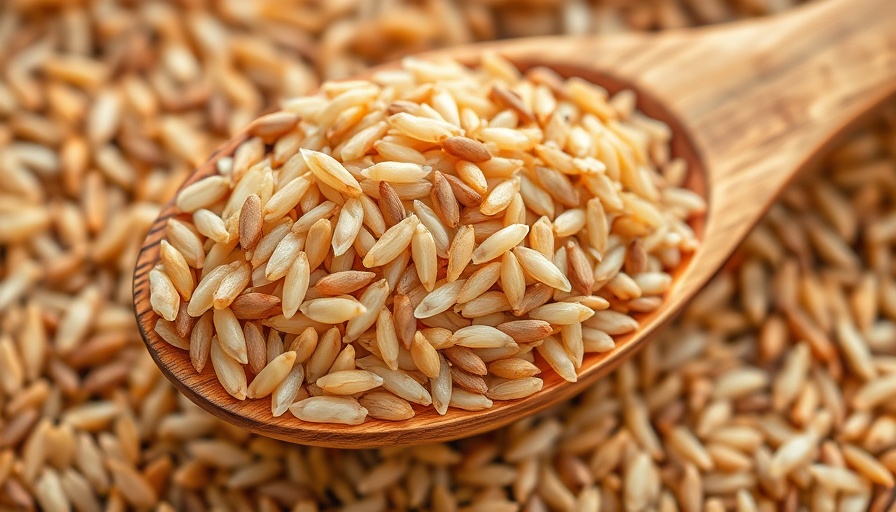
Understanding the Rising Concerns of Arsenic in Rice
The debate surrounding brown rice versus white rice has taken a new turn with recent findings that brown rice contains significantly higher levels of arsenic. Research from Michigan State University reveals alarming statistics: brown rice has 24% more total arsenic and up to 40% more inorganic arsenic, which is classified as a known carcinogen. This raises an urgent question for health-conscious consumers weighing the benefits of nutritious food against potential health risks.
Health Benefits that Come with Risks
Brown rice has been championed for its nutritional properties—rich in vitamins, minerals, fiber, and antioxidants. It's often hailed for its ability to reduce cholesterol levels, aid in blood pressure management, and support overall heart health. However, the newfound risks associated with arsenic exposure complicate the narrative. Parents and caregivers must navigate these conflicting insights carefully, particularly as young children are more susceptible to arsenic’s harmful effects.
Comparing the Nutritional Profiles: A Trade-off
While brown rice offers more nutrients, it also bears the risk of higher arsenic levels. White rice, processed to remove the outer layers, boasts significantly lower arsenic content but lacks many nutrients found in its brown counterpart. This trade-off presents consumers with a dilemma: select the more nutritious option with hidden risks, or choose the safer alternative that offers fewer health benefits. An understanding of these pros and cons is essential for anyone interested in making informed decisions about their diet.
Children's Health: Understanding the Risks
The study emphasizes that young children are particularly at risk due to their higher food intake relative to body weight. Parents should consider a balanced approach—incorporating both brown and white rice into their children’s diets may mitigate some of the arsenic exposure risks while still delivering necessary nutritional benefits.
The Broader Implications for Public Health
Despite these alarming findings, researchers assert that there currently are no acute public health risks for the general American population from rice-related arsenic exposures. However, the study calls for further risk-benefit analyses to develop well-rounded dietary guidelines. Ultimately, the findings challenge consumers to re-examine their food choices and consider the broader implications of what they eat.
Making Informed Dietary Choices
For those committed to healthy living, the balance between risk and benefit is paramount. Opting for a diet rich in whole foods can help counterbalance arsenic exposure. Consider incorporating various grains, vegetables, and legumes to diversify nutrient intake without relying solely on rice. After all, nutrition is not just about individual foods but about creating a balanced plate.
Personal Reflections on Healthy Eating
As we evaluate our diets, it is essential to foster mindfulness in our eating habits. This doesn’t only involve understanding what goes into our meals but also developing a positive relationship with food. Practices such as meal planning and cooking at home can empower individuals to take charge of their nutrition, leading to healthier lifestyle outcomes.
In a world where dietary information changes rapidly, staying informed is the key to making choices that support our overall well-being. Exploring options like meal prep, mindful eating, and embracing a variety of food sources can bolster our health while minimizing risks.
 Add Row
Add Row  Add
Add 




Write A Comment